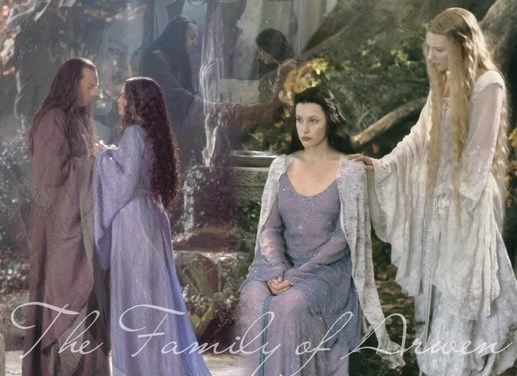Gem treasured by the Dwarves of the Lonely Mountain. The Arkenstone was a great white stone. Thorin Oakenshield described it as “like a globe with a thousand facets; it shone like silver in the firelight, like water in the sun, like snow under the stars, like rain upon the Moon!” (Hobbit, p. 243) Thrain I had found it at the roots of the Lonely Mountain. The Dwarves cut and fashioned the gem, which reflected light in many sparkling colors and glowed with its own inner light.
The Arkenstone became part of Smaug the Dragon’s hoard when he drove the Dwarves from the Mountain in 2770. When Thorin set out to reclaim the Lonely Mountain from Smaug in 2941, the Arkenstone was the treasure he most desired to reclaim. But when the company entered Smaug’s lair, Bilbo Baggins saw the Arkenstone first and slipped it into his pocket without telling anyone.
Thorin later told the company to look for the Arkenstone, which he claimed for himself and said he would punish anyone who withheld it. Still, Bilbo said nothing, because he had thought of a plan that involved the Arkenstone. By this time, the Men of Lake-town led by Bard and the Elves of Mirkwood led by King Thranduil had come to the Lonely Mountain seeking a share in the dragon hoard.
- mymedicare.org login
- hotschedules employee login
- bet way log in
- kp.org login member login
- rr webmail login
- USPS Liteblue employee login
- NJMCDIRECT traffic ticket
Thorin refused to part with any treasure or listen to their claims while they camped outside the gates with their armies. Bilbo justified his “burglary” by telling himself that the Dwarves had said he could pick his share of the treasure, but deep down he realized that the Arkenstone was exempt from this and that trouble would come of it.
Bilbo thought that the claims made by Bard were reasonable. Hoping to prevent a battle and to end the matter so he could go home, Bilbo secretly took the Arkenstone to Bard so he could use it to negotiate with Thorin. When Thorin found out he was enraged and ordered Bilbo to leave.
Thorin agreed to pay one-fourteenth of the hoard in silver and gold to Bard in exchange for the Arkenstone, but he did not pay him immediately thinking that he might be able to retrieve the Arkenstone by force with the help of his kinsman Dain and his army. Before the Dwarves could act, an army of Goblins and Wargs led by Bolg arrived and the Dwarves, Elves, and Men had to join forces to defeat them in the Battle of the Five Armies.
Crown of Gondor
Chief token of a royalty of Gondor. The Crown was shaped like a Numenorean war helmet. It was tall and it had two wings shaped like a sea-bird’s representing the Kings who had come across the Sea from Numenor to establish the realm of Gondor in Middle-earth. The wings were made of pearl and silver and the Crown was set with seven diamonds around the base and a red jewel on top.
Elendilmir
Token of a royalty of the North Kingdom. The Elendilmir was a white star-shaped gem on a silver fillet worn on the brow of the King. The gem was Elvish crystal and the silver band was mithril.
The Elendilmir came to be named after Elendil, who brought it to Middle-earth after the downfall of Numenor. It had been an heirloom of the Lords of Andunie passed down from Silmarien, daughter of the fourth King of Numenor. When Elendil established the North-kingdom of Arnor, the Elendilmir was worn in place of a crown.
Mathoms
A term used by Hobbits to describe any items they had no use for but could not bear to throw away. The museum in Michel Delving was called the Mathom-house as it was full of such items. Many Hobbit-holes were crowded with mathoms, and Hobbits frequently passed mathoms around as presents, which they gave out on their birthdays.
Ring of Barahir
Heirloom of the House of Isildur and a symbol of friendship between Elves and Men. The Ring of Barahir had no special powers but it was valued for its heritage. It was made by the Noldor in Valinor in the First Age.
Three Rings Of Elves
Arya, Nenya, and Vilya. The Three Rings of the Elves were the most powerful of the Rings of Power apart from the One Ring. Their power was in understanding, making, preserving and healing. They were not weapons, though they could be used to defend against Sauron and his servants. The Three did not make their wearers invisible.
The Three Rings were made by the great Elf-craftsman Celebrimbor in Eregion around the year 1590 of the Second Age. Celebrimbor and the Elven-smiths of Eregion had been deceived by Sauron, who had come to them in a fair disguise pretending to be an emissary of the Valar and had promised to teach them new skills. Under Sauron’s instruction, the Elves began making the Rings of Power including the Nine Rings and the Seven Rings. The Three Rings were made by Celebrimbor alone.

